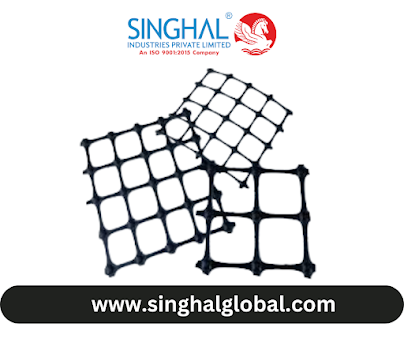The Ultimate Guide to BOPP Bags are Versatility and Benefits Explained
BOPP bags have gained significant popularity in recent years due to their versatility and functionality. Bopp rice bags are widely used for various purposes, from packaging food to agricultural products. In this blog post, we will explore everything you need to know about BOPP bags, including their types, advantages, and more.
Introduction
When it comes to packaging solutions, BOPP bags have carved a niche for themselves. They are not just your regular bags; these polypropylene bags boast incredible strength, durability, and versatility. Whether you’re a farmer looking to package your rice or a retailer needing a sturdy bag for your products, BOPP bags are the go-to choice. But what exactly makes these bags so special? Let’s dive deeper.
What are BOPP Bags?
Definition and Material Composition
BOPP stands for Biaxially Oriented Polypropylene. These bags are made from a type of plastic that undergoes a unique process, making them stronger and more resistant to tearing compared to regular plastic bags. The biaxial orientation refers to the way the polypropylene is stretched in two directions, enhancing its strength and clarity.
Types of BOPP Bags
There are various types of BOPP bags available in the market, each tailored for specific uses. Some of the most common types include:
Flat BOPP Bags: Ideal for packaging dry products.
Gusseted BOPP Bags: Perfect for bulk items, providing extra space.
Printed BOPP Bags: Customizable for branding purposes.
The Manufacturing Process of BOPP Bags
Steps Involved in Creating BOPP Bags
The production of BOPP bags involves several steps:
Extrusion: Polypropylene pellets are melted and extruded into film.
Biaxial Orientation: The film is stretched in both directions, enhancing strength.
Lamination and Printing: Bags can be laminated for added durability and printed for branding.
Innovations in BOPP Bag Production
With technology evolving, the production process of BOPP bags has seen innovations, such as eco-friendly production methods and advanced printing techniques that offer better quality and sustainability.
Advantages of BOPP Bags
Durability and Strength
BOPP bags are known for their strength. They can withstand rough handling during transportation and storage, making them an excellent choice for packaging.
Moisture Resistance
One of the standout features of BOPP bags is their ability to resist moisture. This makes them ideal for packaging products like grains and pulses, ensuring freshness and longevity.
Customizability
BOPP bags can be easily customized in terms of size, color, and print, allowing businesses to create unique packaging that aligns with their brand identity.
Common Applications of BOPP Bags
Food Packaging
In the food industry, BOPP bags are extensively used for packaging snacks, grains, and other perishable items. Their moisture resistance helps maintain freshness.
Agriculture
Farmers utilize BOPP bags to store seeds and grains, protecting them from environmental factors that could affect quality.
Retail and E-commerce
With the rise of online shopping, Bopp laminated bags manufacturer are increasingly used in retail packaging, providing a sturdy solution for shipping products.
BOPP Rice Bags
Features and Benefits
BOPP rice bags offer numerous benefits, including:
High Strength: Can hold heavy loads without tearing.
Moisture Protection: Keeps rice dry and safe from humidity.
Custom Printing: Allows for branding and information display.
Why BOPP is Ideal for Rice Packaging
The properties of BOPP make it particularly suitable for rice packaging. The bags keep the rice safe during transport and storage, ensuring it reaches consumers in excellent condition.
BOPP Laminated Bags
Definition and Characteristics
BOPP laminated bags are a type of packaging that combines BOPP film with a layer of another material for added strength and moisture protection.
Uses in Various Sectors
These bags are widely used in industries like agriculture, retail, and food, providing an effective solution for packaging products that require extra protection.
Choosing the Right BOPP Bag
Factors to Consider When Selecting BOPP Bags
When selecting BOPP bags, consider the following:
Product Type: Ensure the bag is suitable for the specific product.
Size and Capacity: Choose a size that meets your packaging needs.
Print Options: Decide on branding requirements.
Customization Options Available
Many manufacturers offer customization options, allowing you to design bags that reflect your brand’s identity while meeting practical requirements.
Environmental Impact of BOPP Bags
Biodegradability and Recycling Options
While BOPP bags are not biodegradable, they can be recycled. Responsible disposal and recycling practices can mitigate their environmental impact.
Sustainable Practices in BOPP Bag Production
Many companies are now adopting sustainable practices in the production of Bopp laminated bags, such as using recycled materials and minimizing waste.
Conclusion
BOPP bags have emerged as a reliable and versatile packaging solution across various industries. Their durability, moisture resistance, and customization options make them a popular choice for packaging everything from food to agricultural products. As we continue to seek sustainable solutions, BOPP bags can play a role in responsible packaging practices.
FAQs about BOPP Bags
What are the main benefits of using BOPP bags?
BOPP bags are durable, moisture-resistant, and customizable, making them ideal for various applications.
Can BOPP bags be recycled?
Yes, BOPP bags can be recycled, contributing to environmental sustainability.
Are BOPP bags safe for food packaging?
Yes, BOPP bags are widely used for food packaging and are considered safe.
How can I customize BOPP bags for my business?
Many manufacturers offer customization options, including size, print, and color choices.
What makes BOPP rice bags different from regular plastic bags?
BOPP rice bags are stronger, moisture-resistant, and designed specifically to protect rice during storage and transport.

.png)
Comments
Post a Comment